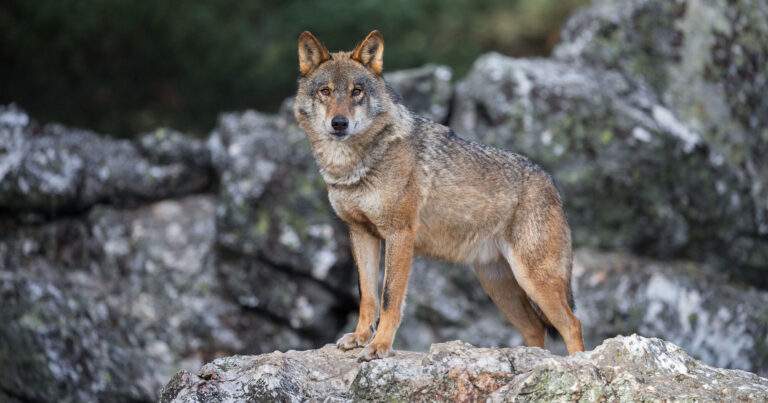By scaling up wildlife-smart communities across Europe, we can support wildlife comeback and take co-existence to the next level.
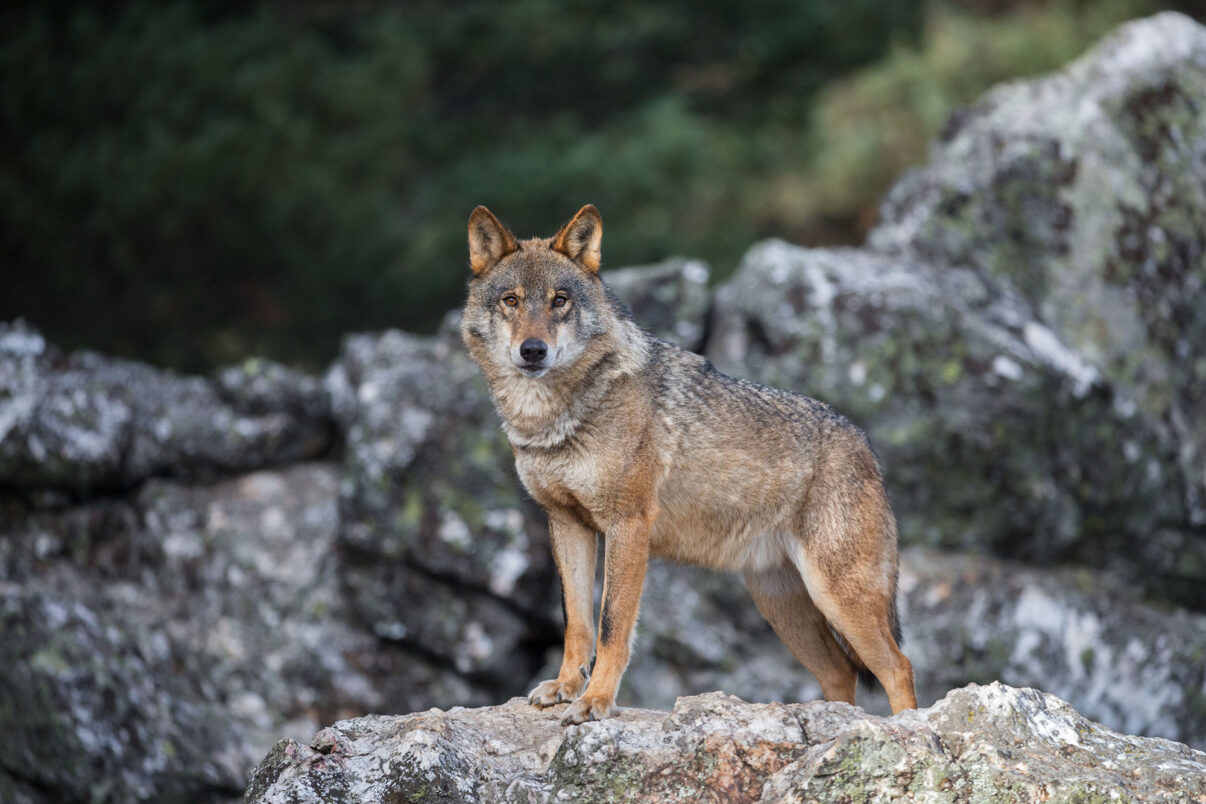
Daniel Allen
Amplifying wildlife comeback
Today, Europe continues to experience a significant decline in biodiversity, driven by factors such as habitat loss, intensive agriculture, pollution, and climate change. Yet many European wildlife species are bucking this trend and staging a recovery. Across the continent, populations of animals such as bears, wolves, and lynx continue to rise, supported by conservation measures that include rewilding. A wide range of other species, such as the Eurasian beaver, European bison, and white-tailed eagle, are also doing well.
Looking to the future, it is essential that all animals and plants across Europe are given the best opportunity to recover and adapt to external factors such as climate change. Accelerating and widening wildlife comeback in Europe can improve the health and functionality of entire ecosystems, delivering a huge array of benefits to nature and people – from the natural regeneration of forests and rebalancing of trophic chains, to the rejuvenation of rural economies, enhancement of carbon storage and crop pollination, crops, and improvement of human health and well-being.

Towards co-prosperity
While the benefits of wildlife comeback in Europe are clear and compelling, the situation on the ground is often more complex. When wildlife populations do start to recover, it often brings challenges – this is particularly true when it comes to large carnivores such as bears and wolves, which are often perceived as a threat to people and other animals. The Wolves Across Borders Conference, which kicks of today in the Netherlands and is co-sponsored by Rewilding Europe, will spark open conversation and knowledge exchange between nations that support wolf populations, with the aim of improving cross-border management.
Looking at the bigger picture, two questions arise. How can we learn to live with resurgent wildlife populations, and how can we move from situations where wildlife is merely tolerated, to ones where both people and wildlife prosper together?
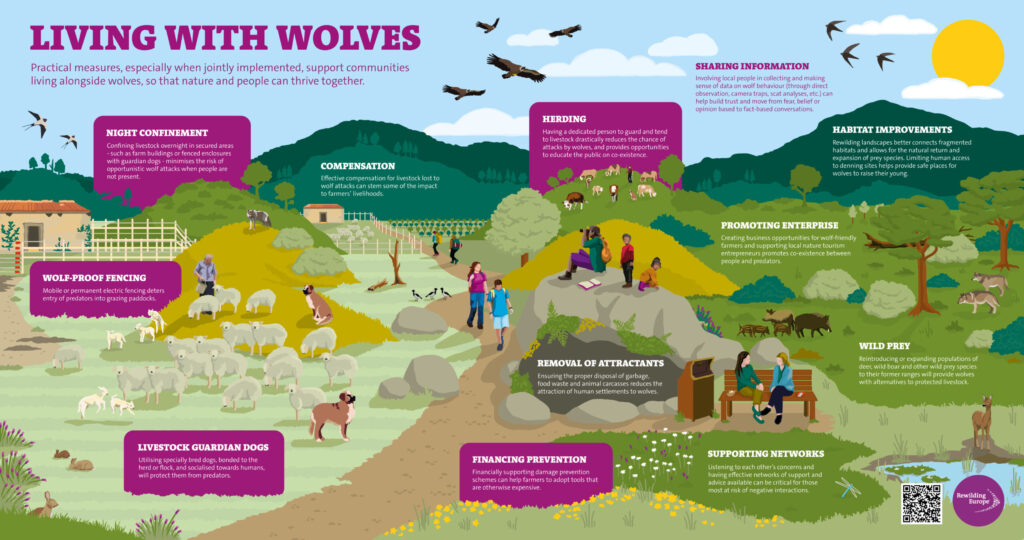
Gemma Shooter
The importance of going local
Government-led initiatives to promote co-existence – involving measures such as damage prevention and compensation – can and do have a positive impact. But these measures are often bureaucratic and time-consuming and frequently overlook the more nuanced, local context. To effectively ensure people and wildlife can prosper together also requires a bottom-up, community-based approach.
One such approach is the wildlife-smart community model, which was originally developed in Canada to promote human-bear co-existence. At their heart, wildlife-smart communities are about enabling and encouraging people in local communities to live alongside and benefit from the burgeoning wildlife population on their doorstep. This approach is grounded in the reality of how people interact with that wildlife on a daily basis, based on proactively resolving challenges, rather than reactively providing compensation after those challenges have led to more serious issues.
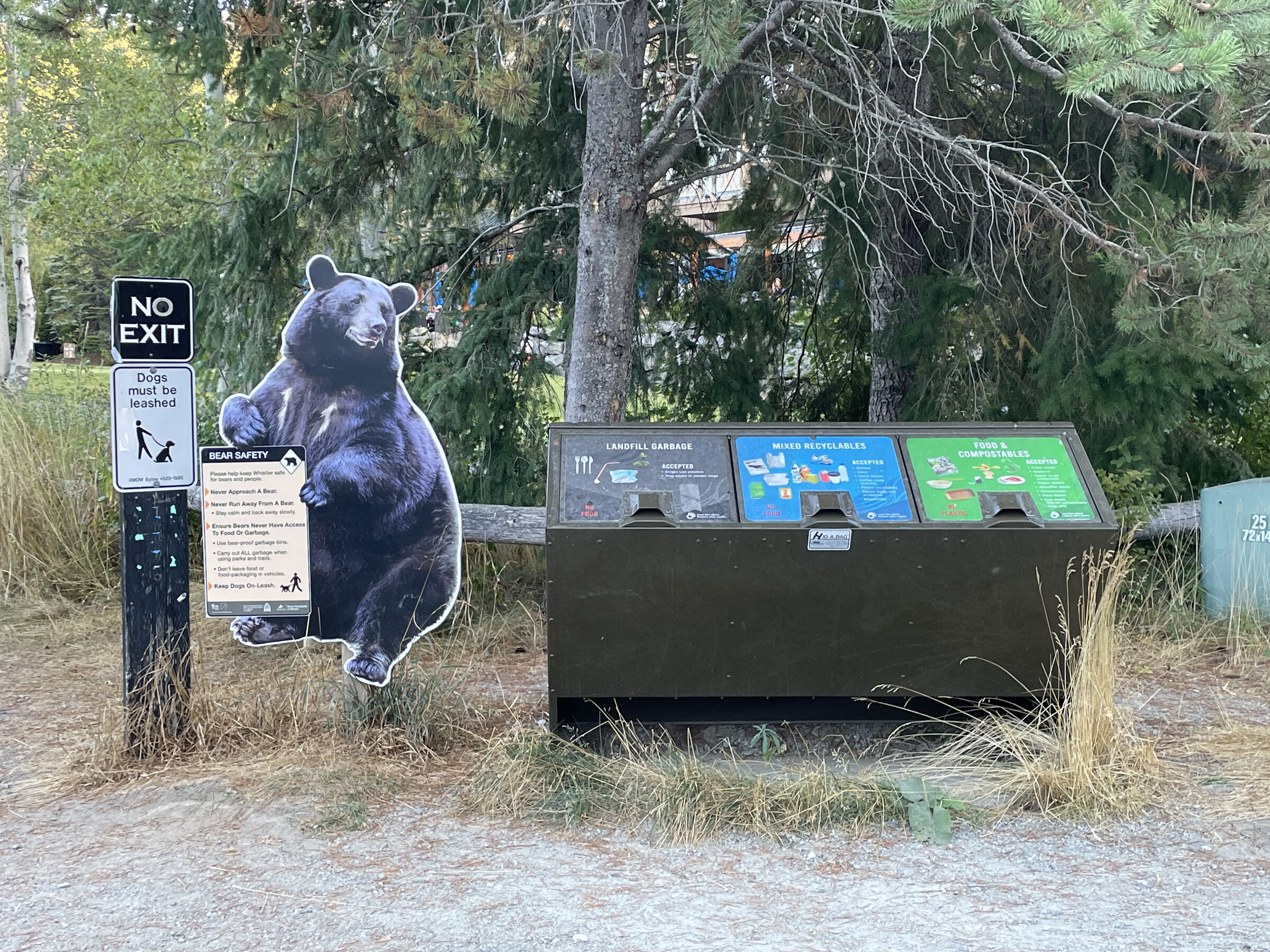
Dara Brodey
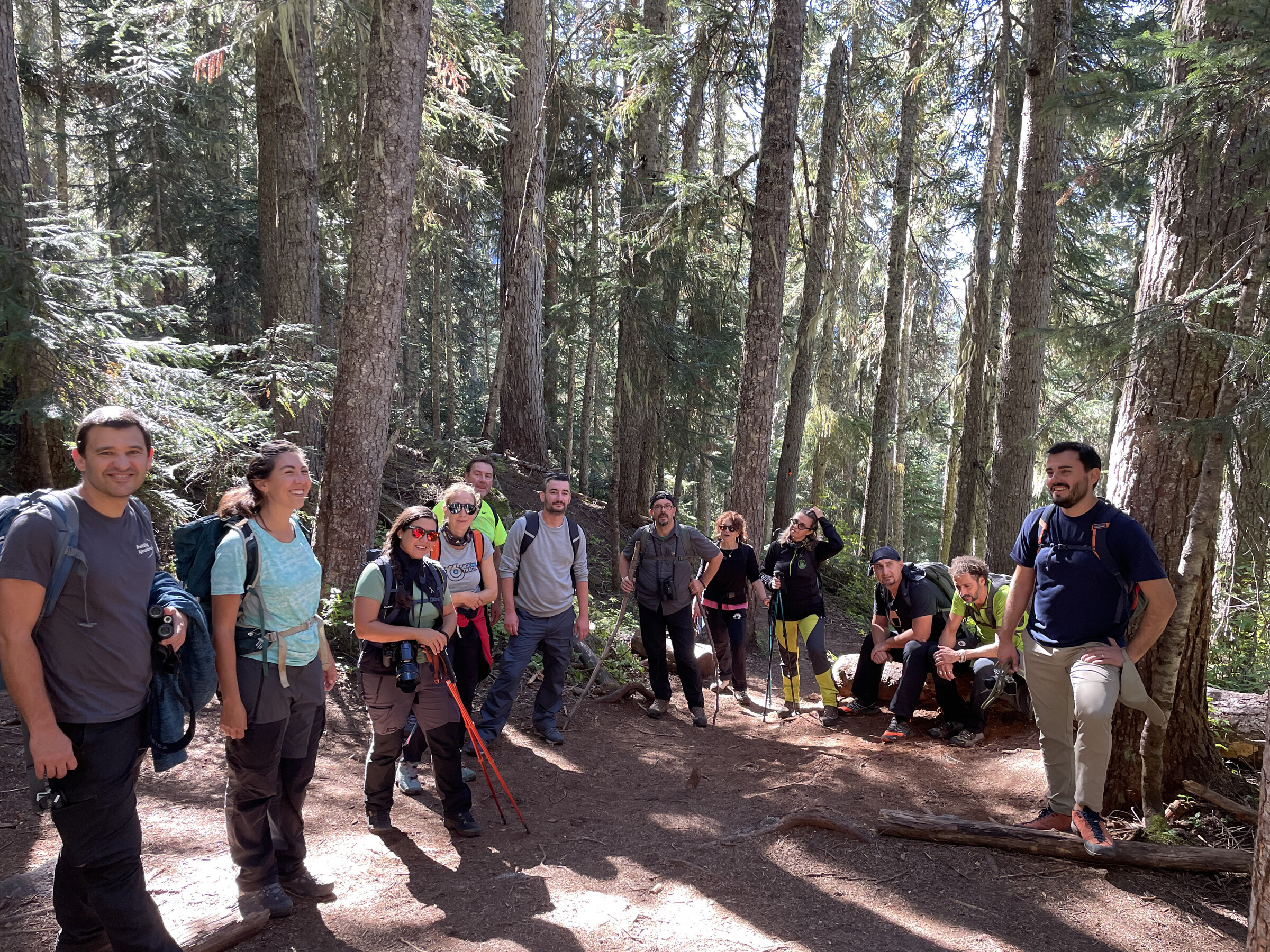
Dara Brodey
The bear essentials
In the Central Apennines, which are home to the endemic and endangered Marsican brown bear, the Rewilding Apennines team and their local NGO partner Salviamo l’Orso established the first “Bear-Smart Community” in 2015, in the small town of Pettorano sul Gizio, where bears from the neighbouring Abruzzo, Lazio and Molise National Park have now settled. Building on their initial success, they are currently creating a network of 16 such communities across the landscape, as part of an initiative to develop multiple large-scale wildlife corridors.
“Bear-Smart Communities play an essential role within these corridors, enabling bears and a wide range of other wildlife species to move safely between protected areas,” explains Angela Tavone, the Rewilding Apennines Communications Manager. “To make these communities ‘smart’, we employ a range of measures. Some of these, such as the installation of electric fences, distribution of bear-proof bins, and the restoration of abandoned orchards located away from villages, are about preventing bear-related damage.
“But we go beyond this by supporting the development of nature-based businesses that benefit from the presence of wildlife, particularly the iconic Marsican bear. This way, people in local communities not only feel an emotional connection with bears as part of their natural and cultural heritage, but are also incentivised to support their recovery because they are deriving socio-economic benefits from them.”
Fostering collaboration
To enhance engagement with local stakeholders the Rewilding Apennines team are working with municipal councils to establish committees in each Bear-Smart Community. These committees, which foster dialogue and shared decision-making, include representatives of all the main local stakeholders groups, who meet regularly to discuss issues in the landscape connected with all wildlife species and wilder nature.
“A key factor in making wildlife comeback successful in the long term is addressing issues between people relating to that comeback – it’s not just about issues between animals and people,” says Fabien Quétier, Head of Landscapes at Rewilding Europe. “Communities are diverse and not everyone is going to be in a position to benefit economically from wildlife comeback. Getting people of all backgrounds sitting at the same table to find practical ways forward is critical if all parts of society are going to thrive alongside wildlife.”
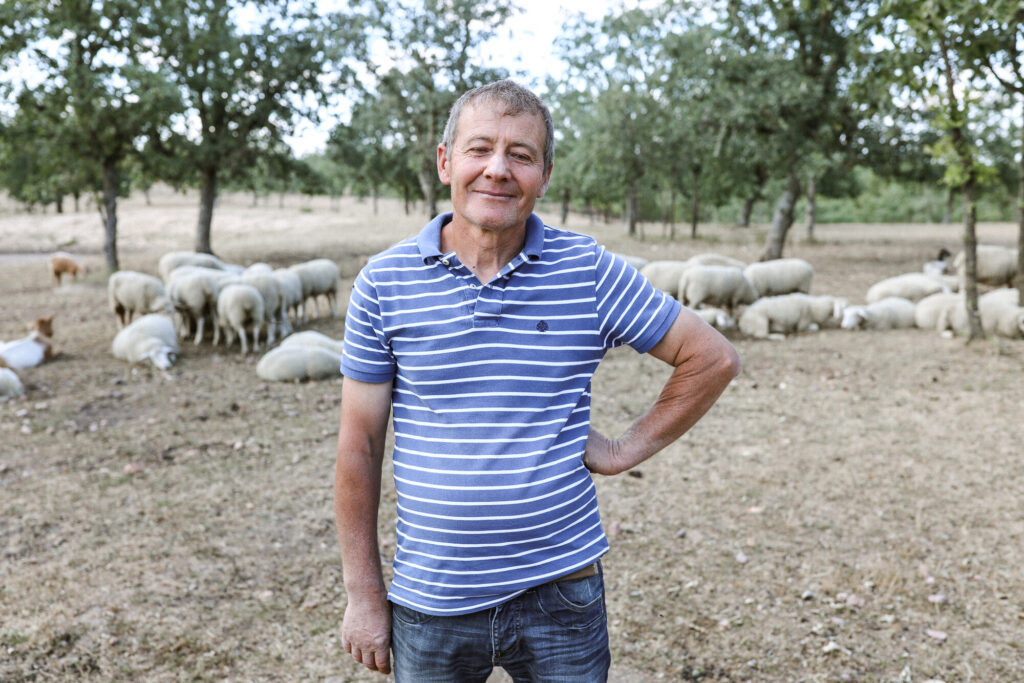
Nick Vass/Wildling Shoes
Scaling up
The wildlife-smart community model has huge potential for scalability across Europe and Rewilding Europe is working to replicate it in other rewilding landscapes.
In the Southern Carpathians of Romania, where Rewilding Europe and WWF-Romania began reintroducing European bison in 2014, the free-roaming population of this iconic herbivore now numbers over 200 individuals. Building on previous measures to promote human-bison co-existence, Rewilding Romania began developing the concept of “Bison-Smart Communities” last year, with a view to formally establishing them in 2025 with three municipalities.
And in Portugal’s Greater Côa Valley, the rewilding team are working to promote co-existence between local communities and Iberian wolves. In 2024, the Rewilding Portugal team completed the provision of 108 livestock guardian dogs and 52 wolf-proof fences to local livestock owners to minimise predation, while they have also carried out measures to support the recovery of roe deer populations – a key wild prey species for these iconic carnivores.

Catalin Josan
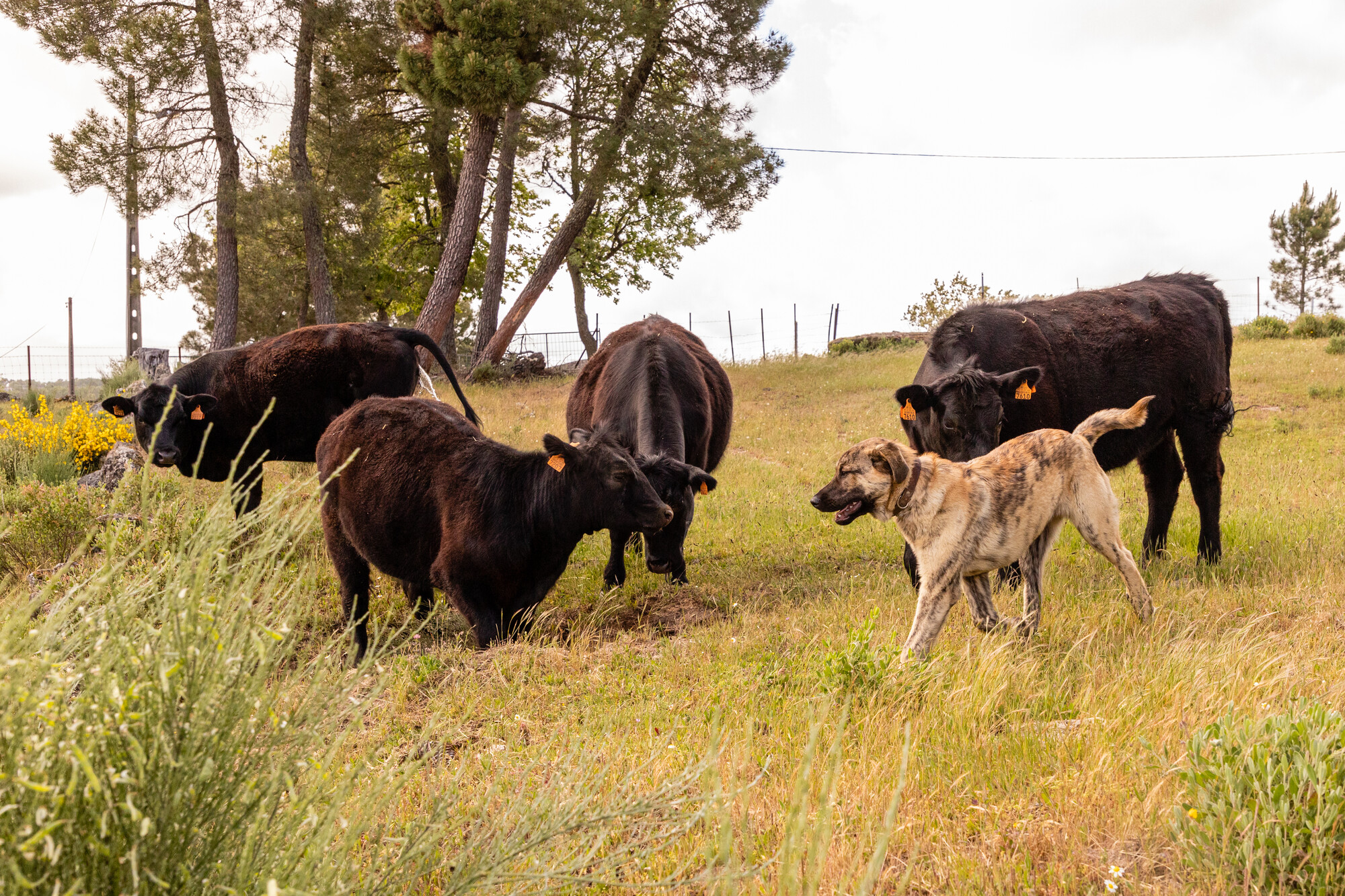
Ricardo Ferreira
Beyond rewilding landscapes
The wildlife-smart community concept is already moving beyond Rewilding Europe’s rewilding landscapes. On the Greek mainland, as part of the same initiative to develop multiple large-scale wildlife corridors for bears in the Central Apennines, efforts are underway to develop Bear-Smart Communities in the municipalities of Amyntaio and Trikala-Meteora, with agreements signed in 2024. Measures to be carried out include forming local committees and involving people in developing co-existence plans that include installing bear-proof rubbish bins, and creating bear intervention units, in case any challenges arise.
Later this year, Fundacion Oso Pardo, a Spanish NGO working to conserve brown bears in the Cantabrian Mountains, will visit the Central Apennines to learn more about Bear-Smart Communities, while Rewilding Europe will begin an initiative to develop multi-lingual guidelines for others in Europe looking to establish wildlife-smart communities.
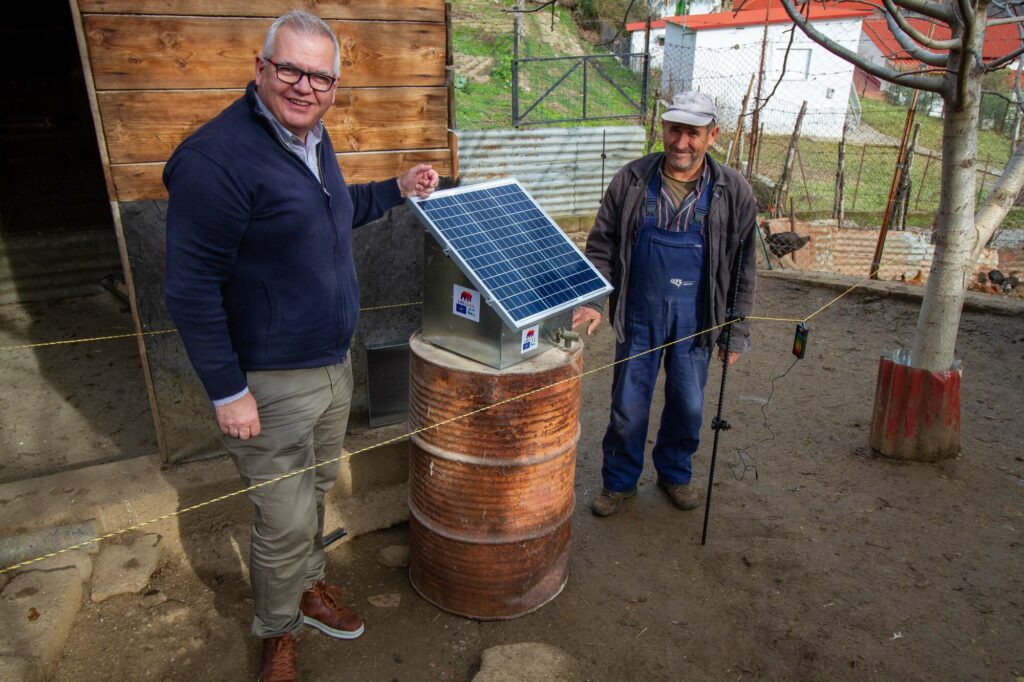
Dimitris Vavylis
Onwards and upwards
Across Europe, dialogue and practical action are taking place on a growing scale at grassroots level, enabling people and wild animals to live alongside each other in a mutually beneficial way.
“The very fact that wildlife comeback is happening in many parts of Europe means that we are gradually moving towards a situation where people and wild animals are co-existing,” says Fabien Quétier. “Challenges remain, of course, but I believe the overall trajectory is positive. Even the backlash against wolves is positive in a way, because it shows that wolf populations are recovering. The wildlife-smart community model builds on this trajectory by shifting the needle from intolerance to acceptance, and along the scale towards prosperity. By scaling up the wildlife-smart approach, we can build a wilder, more resilient Europe where both people and nature thrive.”
“By scaling up the wildlife-smart approach, we can build a wilder, more resilient Europe where both people and nature thrive.”

Fabien Quétier
Head of Landscapes at Rewilding Europe
Want to know more?

